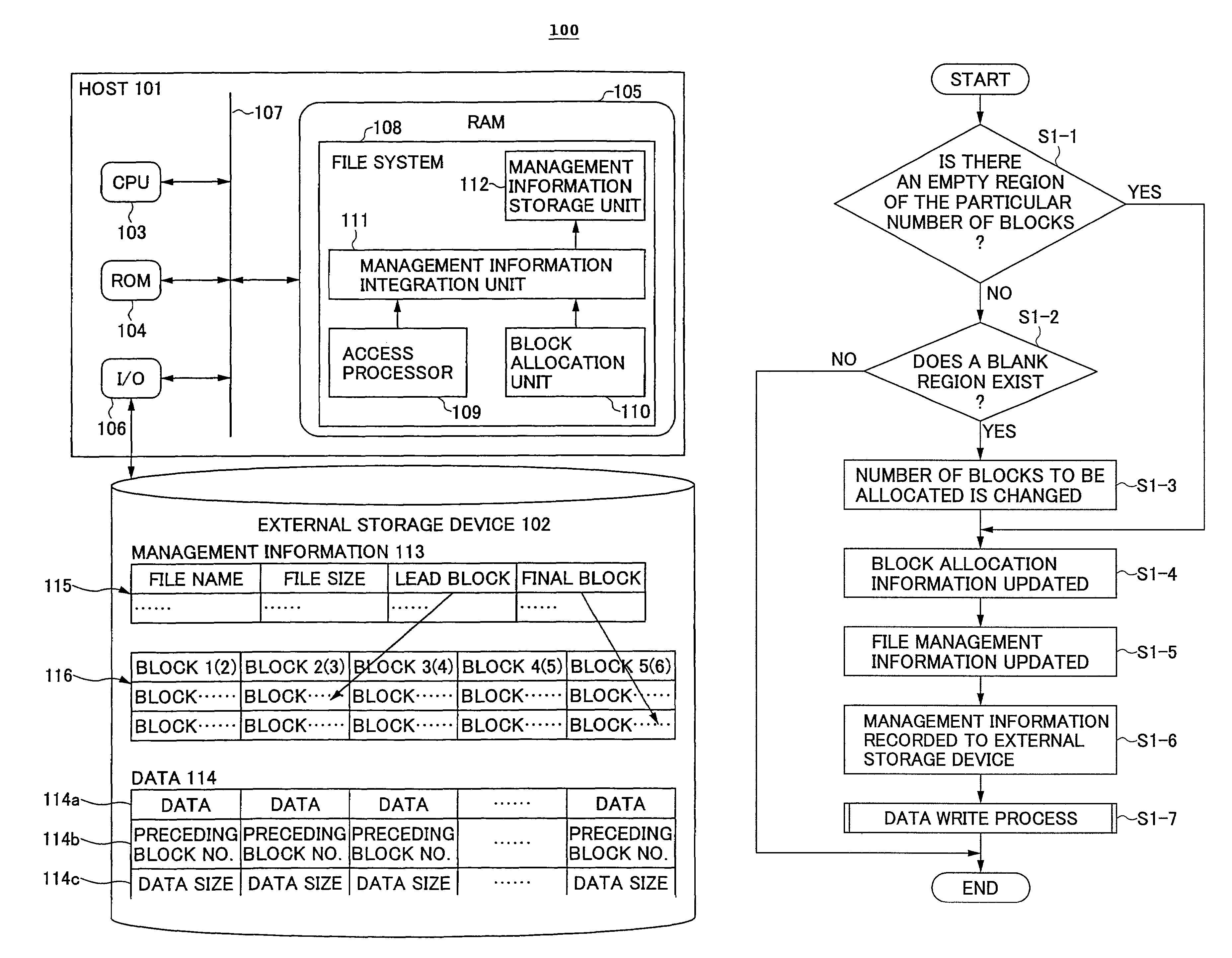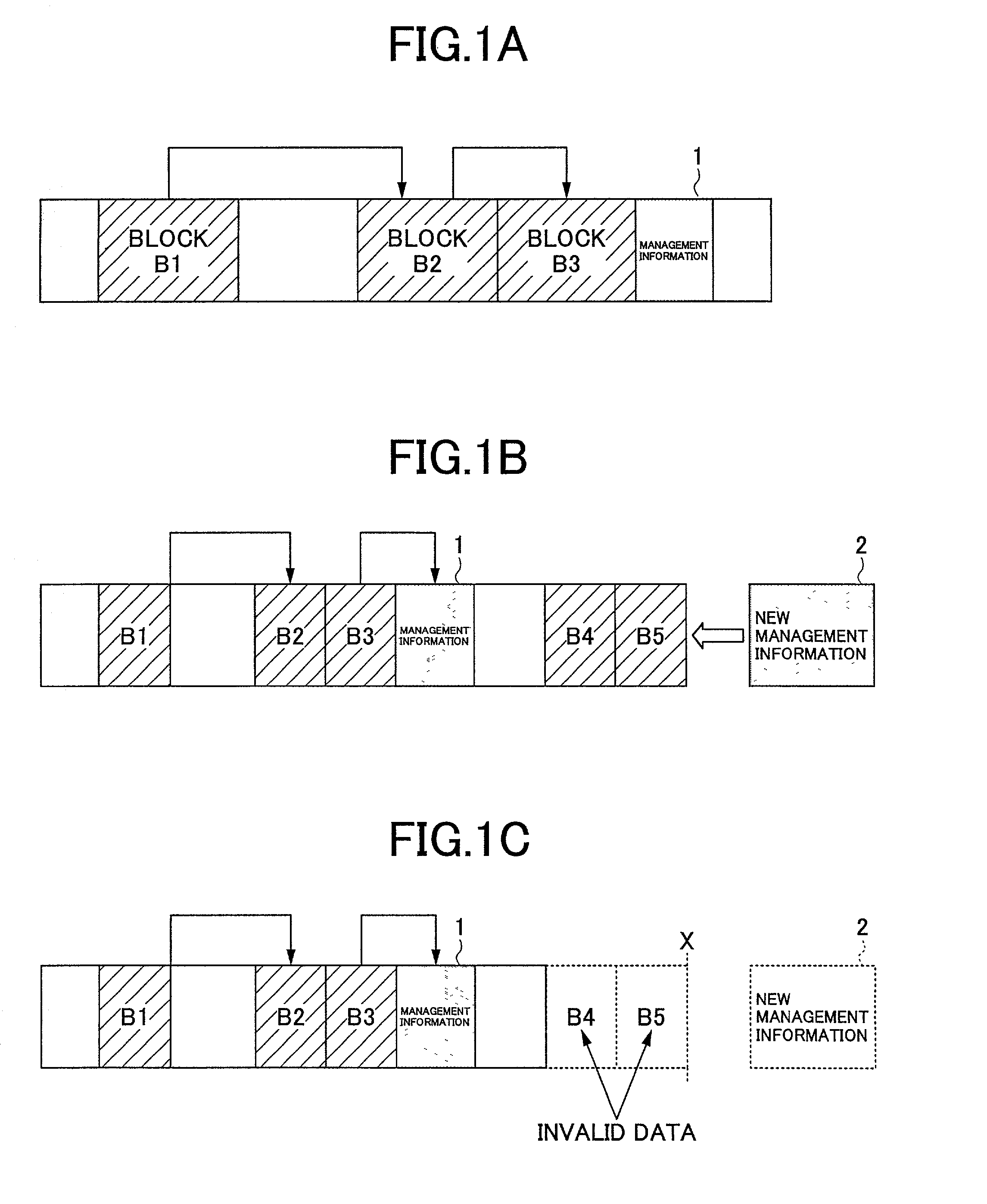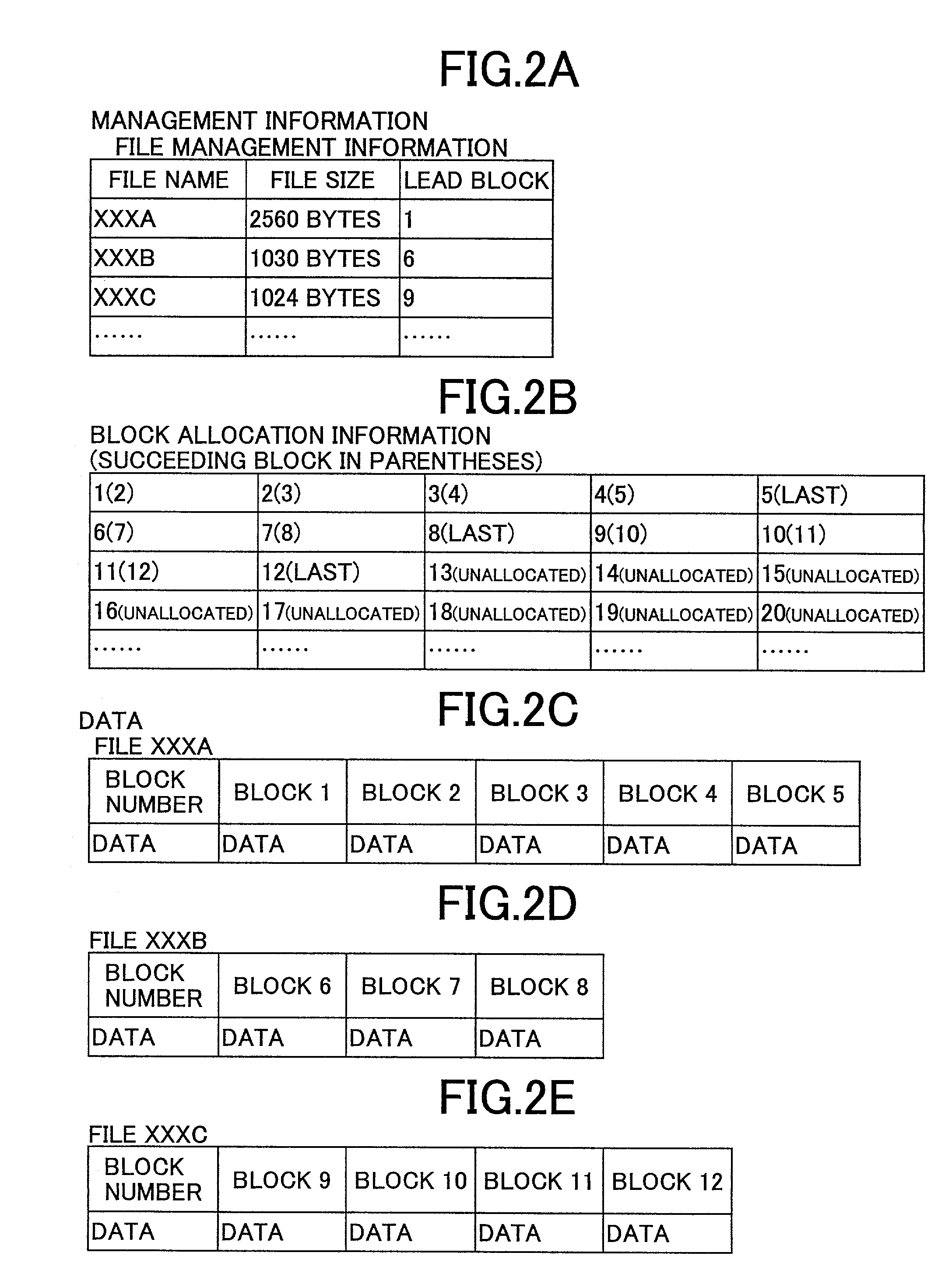File device and file access method
a file device and file access technology, applied in the field of file device and file access method, can solve the problems of invalid data sequence in the added storage, inability to read out the entire data recording sequence on the storage medium, and the existence of a storage medium capable of storing data, etc., and achieve the effect of effective us
- Summary
- Abstract
- Description
- Claims
- Application Information
AI Technical Summary
Benefits of technology
Problems solved by technology
Method used
Image
Examples
first embodiment
[0060]FIG. 3 is a block diagram of the present invention.
[0061]The file device 100 of the present invention is composed of a host computer 101 and an external storage device 102.
[0062]The host computer 101 comprises a CPU 103, ROM 104, RAM 105 and an input / output interface 106 all connected by a bus 107, and controls the external storage device 102.
[0063]The CPU 103 performs all manner of controls using applications stored in the ROM 104. The RAM 105 is used as the work memory of the CPU 103.
[0064]The file system 108 of the present embodiment is achieved by the applications stored in the ROM. The applications that achieve the file system 108 are opened by the RAM 105 during execution and are executed by the CPU 103.
[0065]The file system 108, as its function block, is composed of an access processor 109, a block allocation unit 110, a management information integration unit 111 and a management information storage unit 112. The access processor 109 controls the writing of data to the...
second embodiment
[0133]FIG. 12 is a diagram illustrating a scheduling of the present invention.
[0134]As shown in FIG. 12(A), the video image B has an encoding rate that is twice that of video image A and video image C and the number of blocks transferred at time of access to the external storage device 102 is the same. Additionally, video images A, B and C are assumed to have the same degree of priority.
[0135]The recording of video images A, B and C according to the results of the scheduling involves, as shown in FIG. 12(B), recording video image A over blocks after recording video image B over 4 blocks, and further, recording video image C over 4 blocks after recording video image B over 4 blocks. This process is continued until the recording of each video image is completed. Additional scheduling is conducted in the event that conditions change during recording, such as the number of channels increases or decreases.
[0136]Next, the allocation of blocks is carried out based on the scheduling informa...
third embodiment
[0143]FIG. 14 is a diagram illustrating an operation of the present invention.
[0144]It should be noted that the composition of the present embodiment is the same as that of FIG. 11, so a description thereof is omitted.
[0145]Additionally, the scheduling is also the same as the scheduling of the second embodiment shown in FIG. 12, so a description thereof is omitted.
[0146]As shown in FIG. 14, the latest management information is recorded in the management information recorded in the management information storage unit 112 set in the RAM 105 of the host computer 101.
[0147]By contrast, in the external storage device 102 is recorded the management information 113 previously stored from the management information storage unit 112 to the external storage device 102. When storing individual video images according to the scheduling, first the storage area for the video image scheduled first is retained.
[0148]At this time, first, an unallocated region is sought using the block allocation info...
PUM
| Property | Measurement | Unit |
|---|---|---|
| size | aaaaa | aaaaa |
| electric power | aaaaa | aaaaa |
| data composition | aaaaa | aaaaa |
Abstract
Description
Claims
Application Information
 Login to View More
Login to View More - R&D
- Intellectual Property
- Life Sciences
- Materials
- Tech Scout
- Unparalleled Data Quality
- Higher Quality Content
- 60% Fewer Hallucinations
Browse by: Latest US Patents, China's latest patents, Technical Efficacy Thesaurus, Application Domain, Technology Topic, Popular Technical Reports.
© 2025 PatSnap. All rights reserved.Legal|Privacy policy|Modern Slavery Act Transparency Statement|Sitemap|About US| Contact US: help@patsnap.com



